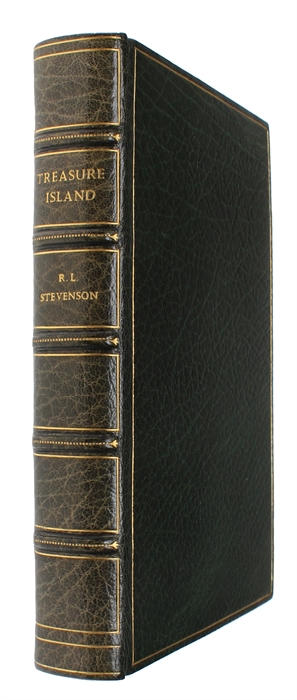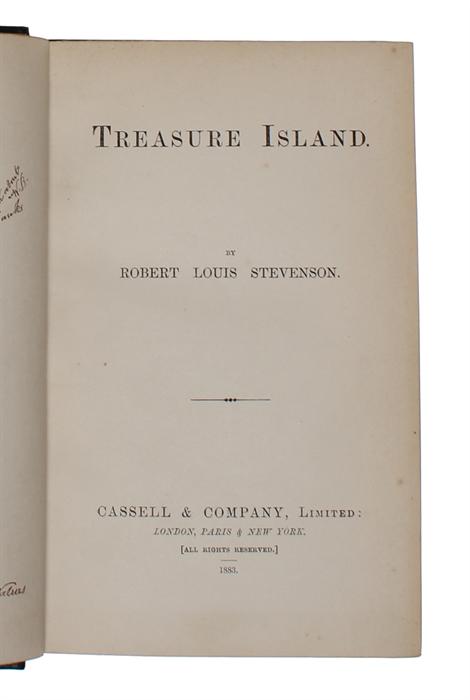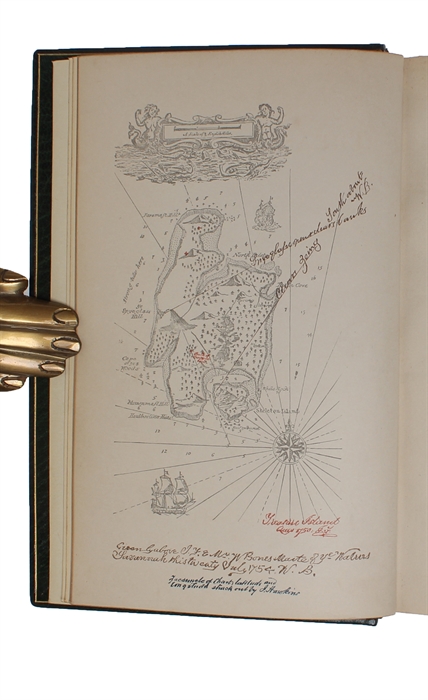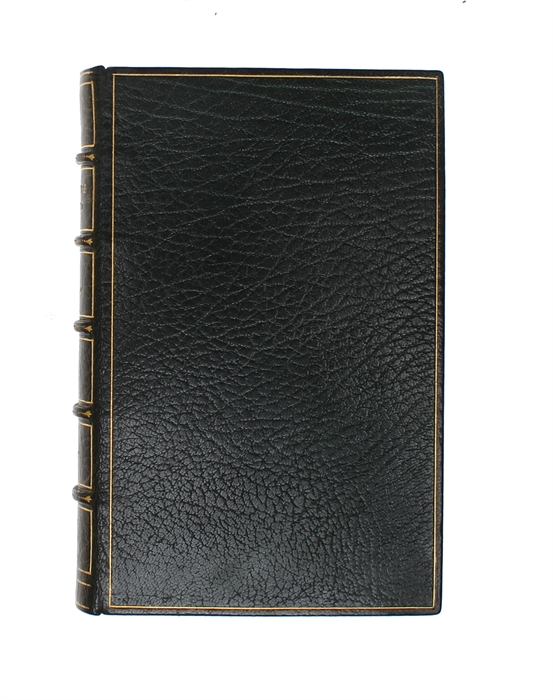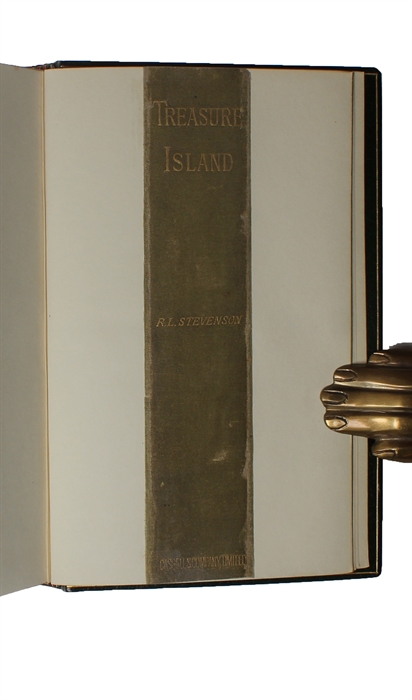CREATING THE PREVALENT IMAGE OF THE PIRATE AND PIRACY
STEVENSON, ROBERT LOUIS.
Treasure Island.
London, Cassell & Company, 1883.
Bound (with the original cloth binding also) in an exquisite full dark green morocco binding with single gilt line-borders to boards and gilt spine. Single gilt line to edges of boards and to inner dentelles. All edges gilt. Binding signed Sangorski & Sutcliffe. Bound in at the end is the original green cloth binding, which has been carefully mounted, baords on arch their leaf, and the spine on its own. The spine is also very well kapt and has all the original gilding. First and last leaves with a bit of light brownspotting, otherwise just and some minor, light scattered brownspotting. All in all a very nice and fresh copy. Frontispiece map of Treasure Island printed in three colours.
First edition of Robert Louis Stevenson's landmark work, with the following first issue points: "dead man's chest" not capitalised on pages 2 nor 7, the first letter of "vain" broken in the last line of page 40, the full stop not present following "opportunity" in line 20 on page 178, "worse" in line 3 of page 197, and the 8 pp. of advertisments correctly numbered 5R-1083. P. 83 has retained the 8 in the numbering, and p. 127 has the 7, but it's more clearly stamped and not in line with the "12" that comes before. For most people, "Treasure Island" needs no further introduction. It is the epitome of the pirate history, has enduringly influenced the way we think of pirates and provided us with the archetypical image of pirates and pirate talk. While it introduced nearly all concepts that are now associated with pirates - one-legged seamen, black-sailed ships, treasure maps marked with an "X," the frightening black spot, and parrots yelling "pieces of eight" -, the preeminent adventure tale "Treasure Island" is also an enduring coming-of-age story, as Jim both navigates life-and-death situations and encounters moral lessons. "When we think about pirates, there is a nearly universal image that comes to mind, which has been perpetuated throughout pop culture. Pirates have developed quite the reputation for saying things such as "Shiver me timbers!" and "Arrr!" and for having a peg leg-maybe even sporting a parrot on their shoulder. This idea of pirates, both in the way they speak and the way they look, derives mostly from the popular novel Treasure Island and one of its movie adaptations. Unfortunately, it probably doesn't have much bearing in reality.
Treasure Island was serialized in a magazine from October 1881 to January 1882 and published in book form in 1883. It was written by Scottish author Robert Louis Stevenson under the pseudonym "Captain George North." The novel follows teenage protagonist Jim Hawkins, who finds himself in possession of a map that leads to buried treasure. Sounds familiar, right? Jim leads the reader on a wild adventure, encountering pirates such as the one-legged Captain Long John Silver and Israel Hands, who want to take the treasure for themselves." (Encycl. Britt.).
Order-nr.: 60322

